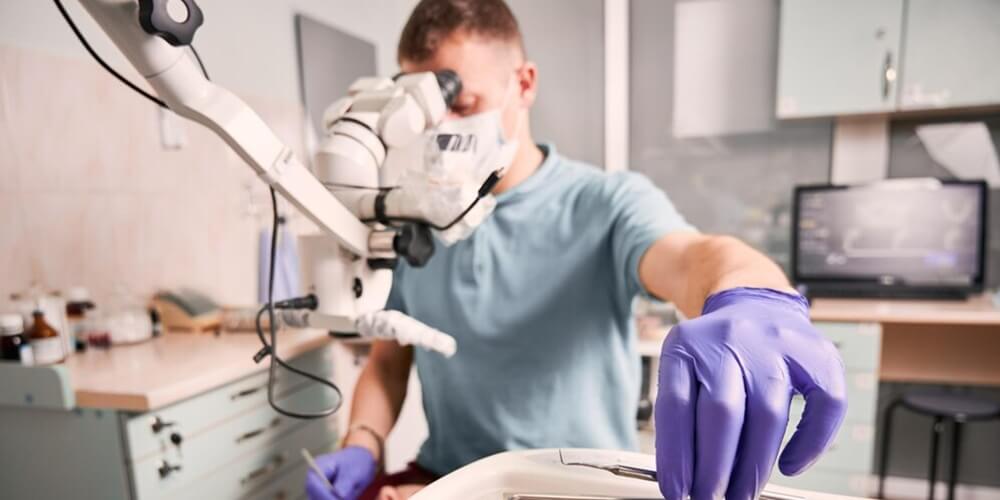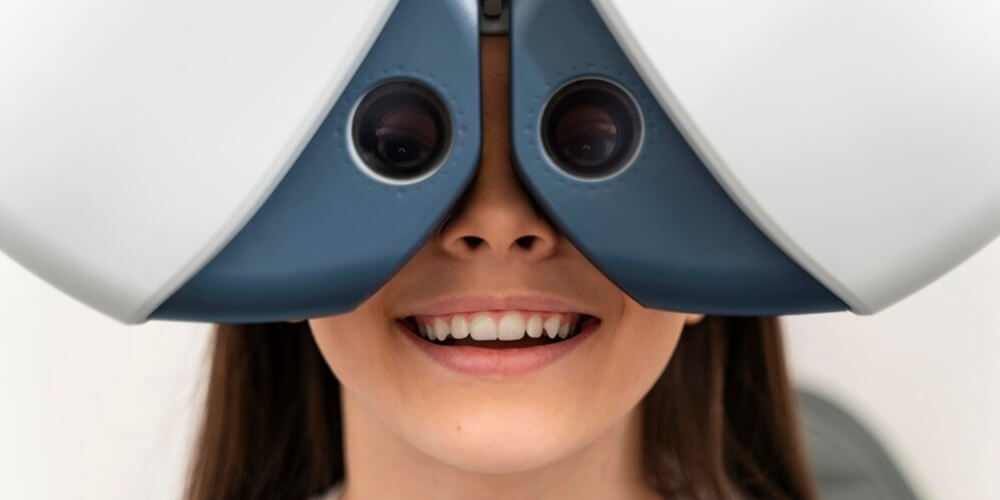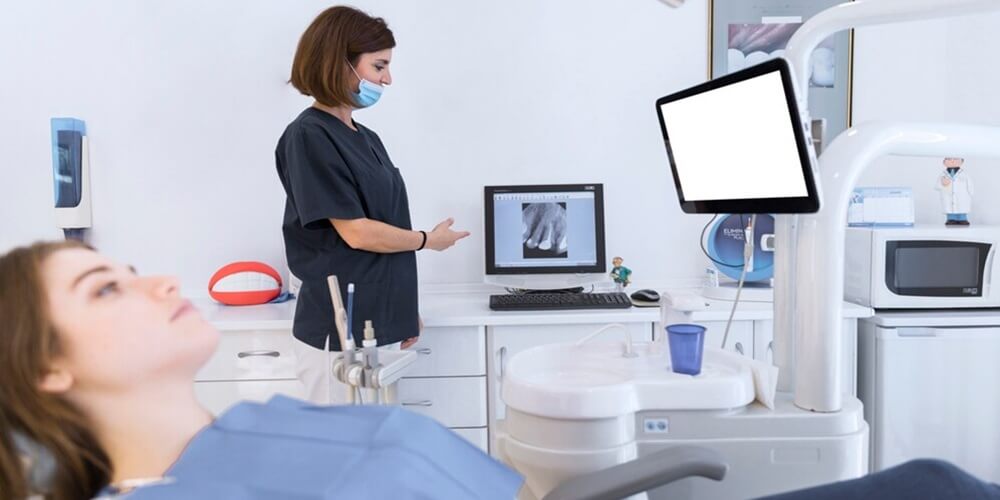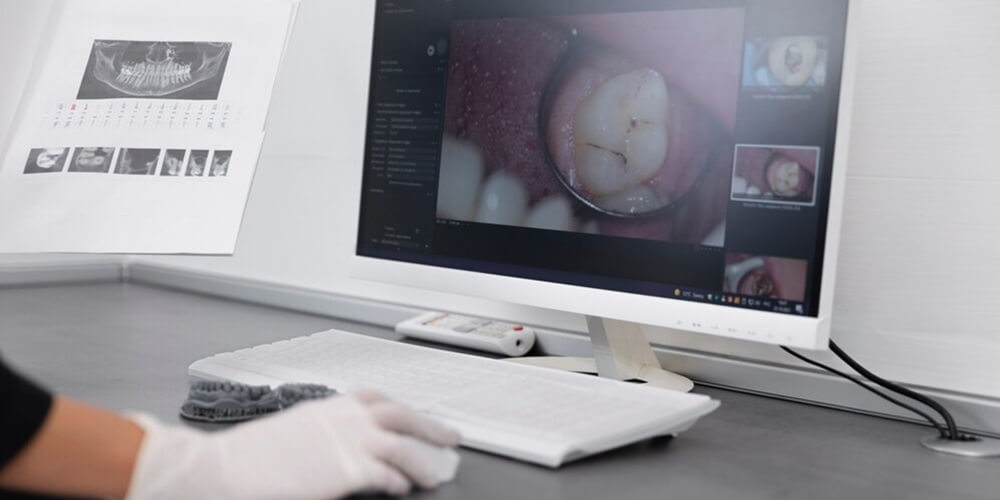Home » The Role of Technology in Dental Aesthetics

Advancement in technology has therefore rubbed off on almost all walks of life, and dentistry is no exception. From digital imaging to the use of 3D printing, technologies have changed the face of dentistry in the past decades. The growth of technology in dental aesthetics has happened therefore as a response to this, developing the area to provide bespoke cosmetically satisfying results. Technology in dental aesthetics has advanced restorations and aesthetic, thereby providing the ability to take into consideration things like facial structures and features that earlier were not considered the central concerns of a dentist. That’s good because aesthetic or cosmetic dentistry is becoming popular with Americans increasingly. Approximately 86% of the U.S. patients for cosmetic dentistry are females, and nearly half of these are between the ages 31 and 50.
It is focused on how to deploy technology in ways that support this mission of ensuring patient care is of the highest quality. From a work and performance perspective, the use of technology within dental practices has been well poised to improve the efficiency and accuracy of patient care through better usability, better software and scanner compatibility, and increased personalization options. This technology in dental aesthetics advancements are more comfortable for patients, which is particularly important for dental procedures. In the era of social media and results-focused processes, patient care isn’t just about how well the crown fits or the ease of making impressions. When it comes to high-investment procedures, like aesthetic dentistry, the experience and the aesthetics matter, too. So even if the food is just as good at a different restaurant, people will still shell out for that consistently impressive ambiance at their favorite spot.

Advances in dental technology have improved the services provided in modern cosmetic dentistry. The increased precision that newer dental equipment provides can directly influence the aesthetic outcomes of dental procedures. This relationship between technology and aesthetics is most actively seen in diagnostics and laboratory processes.
For example, some dental practices use 3D imaging that allows practitioners to generate a 3D model of a patient’s teeth and mouth. In many cases, the software allows dentists to see exactly how a patient’s mouth will change over time as conditions change. Because of this, 3D imaging contributes to better diagnostics, as well as more accurate treatment planning. The newest dental units are also being designed with sleek, ergonomic tendencies. The curvature of the delivery unit has the potential to ease discomfort on a patient’s neck and back. LED lights will also be used more frequently as they provide a brighter luminance, lower operating heat, and a longer lifespan compared to halogen. A shorter lifespan of the halogen light causes the overall cost to quickly become disadvantageous. The LED light also has the option to be tested for more controlled shade matching and incorporates digital images.
Many dentists are choosing to use automatic handpieces so that if more pressure is applied during a cutting action, the speed will not surge, which could potentially hurt the tooth structure. There is also the option of customization, original settings, and preprogrammed selections. There are direct lighting attachments and fiber optic systems that offer a better view because of less shade. Finally, the use of custom-fitted dental tape for precise articulation and impression, as well as the option of a mobile and integrative paper basket, are all included in a new dental unit. These advanced dental tools provide an original design that has also been recognized as an exceptional position provider, which can give a practice an impressive advantage when participating as a preferred dental provider. In addition, practitioners have the option of a mobile trolley incorporated into the dental system as a moveable workstation with a dental professional touch screen integrated and wireless Wi-Fi.
Digital smile design is a revolutionary concept, a digitally assisted protocol, or even an “advanced dental tools,” which has been developed to explore and improve the beauty of a smile. Digital smile design allows us to visualize both the pose and the plan of the aesthetic dental work to be performed, thus allowing collaboration between the professional and the patient because, after all, the main goal of everyone who works in the aesthetic field is not only to make dental treatments valuable but, above all else, to make the individual feel better. Technology and society are evolving in parallel. In contemporary society, everything is centered around technology; everyone is present online through social media, and our lives are digitally documented. People have become much more selective and therefore spend more time pondering and deciding. The dental market is constantly changing. Where once it was more about functional and restorative dentistry, dental treatments are increasingly used in the aesthetic field, improving the appearance of a smile using digital advanced dental tools. Nowadays, aesthetics are very important and involve dentists in all specializations.
The great innovation in the digital aesthetic field is the type of communication we are able to establish with the patient: every user likes to see simulations of his or her aesthetic improvement; patients rarely agree to invest in expensive dental treatments without first having seen a simulation of the result. Digital smile design begins with a photographic session of the patient involving various images to show the professional various aspects of the face, teeth, and smile. Subsequently, the images and details are analyzed and studied at a personal level using CAD software. The library consists of library models. Each technique has its own personal sequence, and the combined techniques allow for the comprehensive customization of the design process. Changes are sure to come in the future, and with the inclusion of digital design in clinical practice, clinically assisted diagnostics merging the two trends at this moment will be prosthetic dentistry and digital dentistry.

Since 1980, there has been an exponential increase in dental technology. One technology that has revolutionized CAD/CAM dentistry. This technology has impacted technology in dental aesthetics the most as it is used to produce crowns, inlays, onlays, bridges, veneers, and dental implant restorations. In the past, these restorations were completed over three visits — the first for diagnostics and outlining a treatment, the second for shaving and extraction of the tooth structure and fitting of a denture, and the final visit for cementation of the definitive restoration. The patient can now have these treatments in a one-hour appointment. This huge leap forward in technology has made first-class dentistry attainable by the general public.
Digital impressions are used to take molds of the tooth structure, eliminating dripping impression material from trays. The ability to prescribe restorations that are perfectly sculptured makes teeth more biocompatible and less sensitive to heat and cold. This technology can also reduce the rate of tooth fractures and infection spread from broken, constantly anesthetized teeth. CAD/CAM dentistry technology now also reads digital impressions. This makes for a quicker result to diagnose the definitive restoration time. The number of visits for the patient is then reduced from two to just one in most cases. As materials and milling blocks have improved, research has shown that a clinician’s preferred material for clinical success is either a lithium disilicate or zirconia crown. Both are also high in aesthetics, and we are without the need to reduce much of the good tooth structure to aid retention and resistance form. Hence, we can be minimally invasive and conservative in tooth reduction while preserving the longevity of the final restoration. The patient is recommended a custom or monolithic-designed crown. The E-Design allows for the incorporation of high-end material choices and is the clinically superior choice if finances allow. The Cerec Omnicam is the biggest selling CAD/CAM dentistry machine on the current market. It is nearly perfect in its ability to take digital impressions. Optical technology is getting closer and closer to the human eye in detecting fine detail, colors, and grooves. Design software can almost be done automatically, with the program suggesting all the correct parameters for the machine to mill. The E-Diagnos is also a recently designed Omnicam. It is not a huge step in technology because its design is not an advance on the Omnicam, but it is a much cheaper option. The Primescan is one of the most expensive digital scanning machines in current circulation. Retrospectively, it is not that much of an improvement on the Omnicam. Another improvement in technology is the improvement in material milling. The campsite speeds of milling have improved, and as such, the cervitec speeds of milling and greater outputs do not compromise material characteristics.

Laser teeth whitening is a modern and increasingly popular dental aesthetic procedure that involves applying a specifically developed dental plate for approximately 15 minutes. Traditional direct contact whitening methods may follow. Laser teeth whitening is highly effective, and the results it produces are both striking and can be more immediate than conventional tooth whitening. Modern tooth whitening systems now utilize the enhanced capability of LED and laser light, which at a certain frequency makes the laser teeth whitening gel more effective and can result in a more rapid treatment. With careful use, provided that the patient is assessed as a good candidate and the procedure is skillfully administered, LED and laser light treatment is now recognized as both safe and effective. More and more adults are keen to try cosmetic work of some kind—like laser teeth whitening—seeking means to enhance their physical appeal. Teeth are almost always a central concern in face-based trade, and opting for repairs has a real, quick, and down-to-earth impact. The results of clinical trials reveal that the procedure is not only effective but quite fast, too. You can even walk out of the dentist’s office with an impeccably bright smile in a single trip. Recovery costs are low as well, a direct appeal to clients with deferred expenses, while the necessary breakdown of the expenditure is seen in the supply. The near separation in treatment sensitivity favors laser therapy, although laser therapy is as effective as other light-activated therapies. It is an efficient procedure for achieving a much whiter grin. You start seeing a huge difference with the direct application because the bleaching factors react with the absorption of all available whitening gels. The treatment also guarantees further decreases in staining and removal and carries relatively few complications, especially when administered by a registered professional.
Hello!